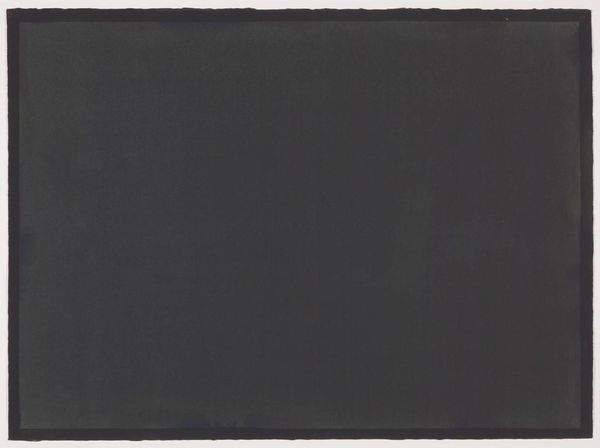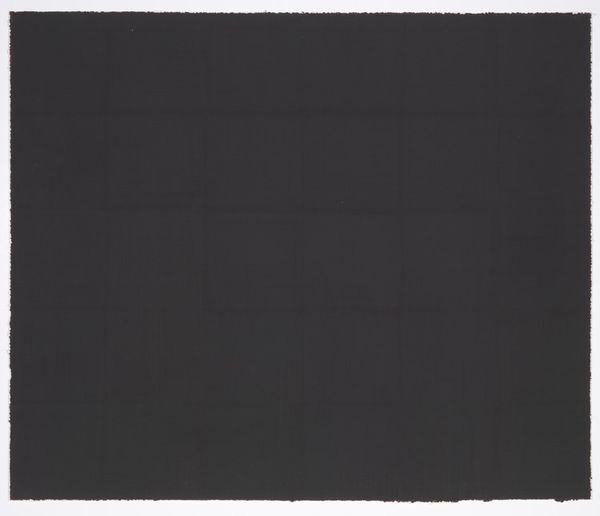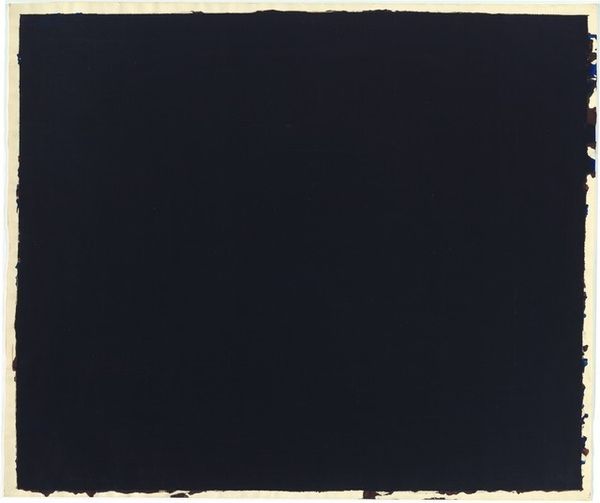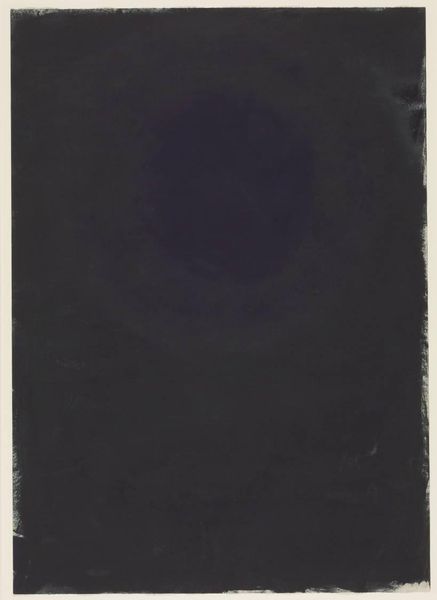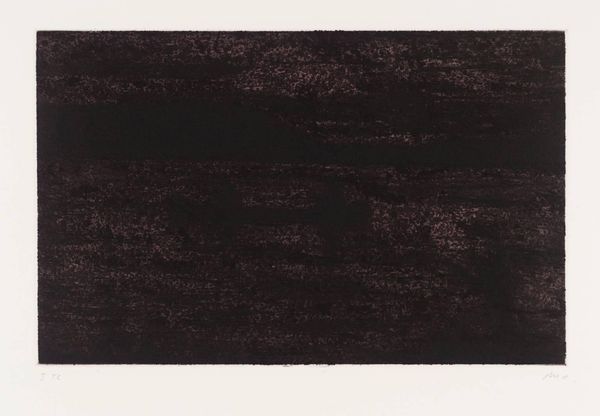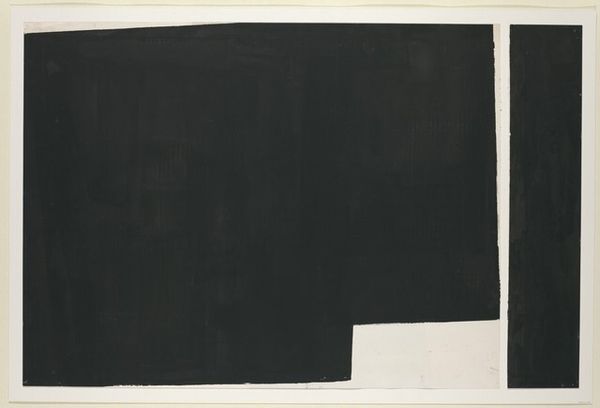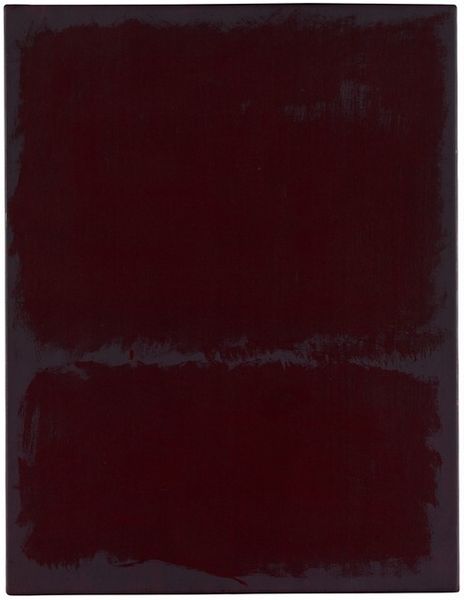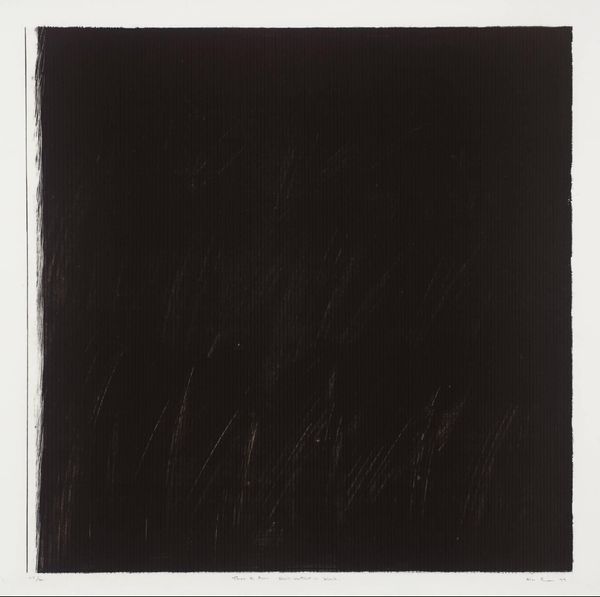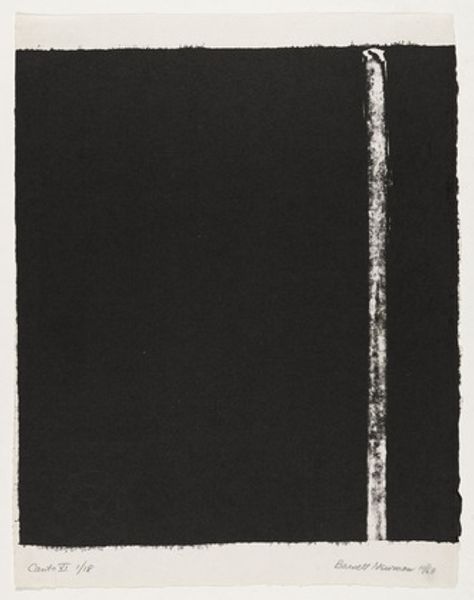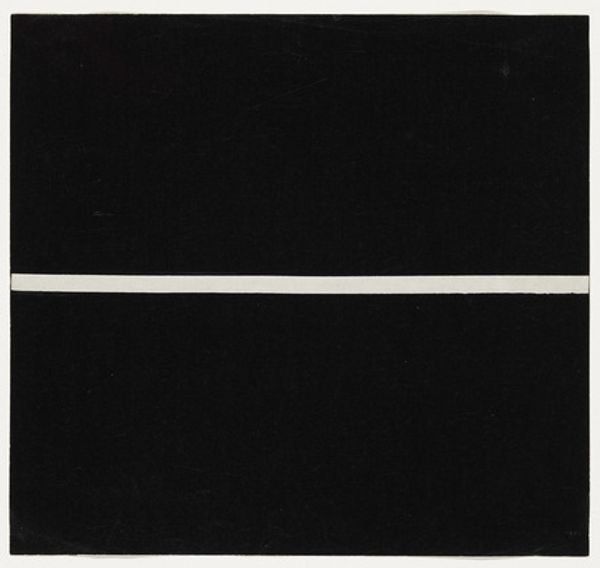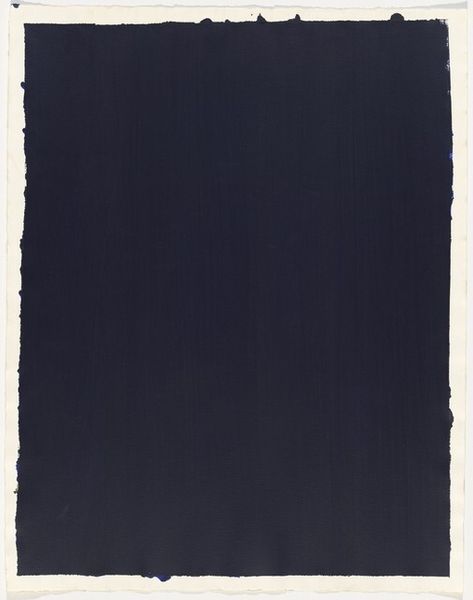
Copyright: Bob Law,Fair Use
Curator: Standing before us is Bob Law’s “Untitled 29.8.87” from 1987, a striking example of his minimalist approach to painting and mixed media. Editor: It’s intensely calming, in a way I didn’t expect. The muted greys invite quiet contemplation. There’s a starkness, yet it’s also soft—almost like looking into a void. Curator: Law was indeed interested in this 'void' concept. His art emerges in a very interesting period: think of the sociopolitical atmosphere of the late 1980s. His geometric and largely monochromatic shapes aimed at evoking this sense of absence, of something underlying or beyond representation. The artist seemed committed to expanding the formal vocabularies of art and highlighting the essence of its components through abstraction and monochromatic color fields. Editor: I think it almost dares the viewer to find something, *anything,* in its monochrome. There's also a political element, the monochrome becomes its own protest, against the high-gloss consumerism that dominated the visual landscape back then. The color almost feels suppressed; maybe it says more about what *isn’t* there, than what *is.* Curator: Precisely, it reflects on how cultural and aesthetic shifts can offer us insight into how we were experiencing or thinking about identity and difference during that decade. His choices were intentional; even this seemingly blank space becomes an assertion of space. His exploration of 'nothingness' became a powerful conceptual force, even a precursor to much postmodern discourse around the subject. Editor: Exactly! Law’s work allows us to contemplate the historical tensions around the era. I love seeing works that defy categorization; the mixed media approach definitely underscores its resistance. There are definite statements being made about challenging conventional ideas on class, race and gender that often shape the mainstream art world! Curator: Agreed, and considering his influence in Minimalist circles, it continues to encourage new debates on materiality and form and hopefully, its politics, too. Editor: Seeing work like Law's can allow me to stop, and just appreciate how those social undertones translate into what we now see as an emotionally, rather than literally, representative color.
Comments
No comments
Be the first to comment and join the conversation on the ultimate creative platform.
